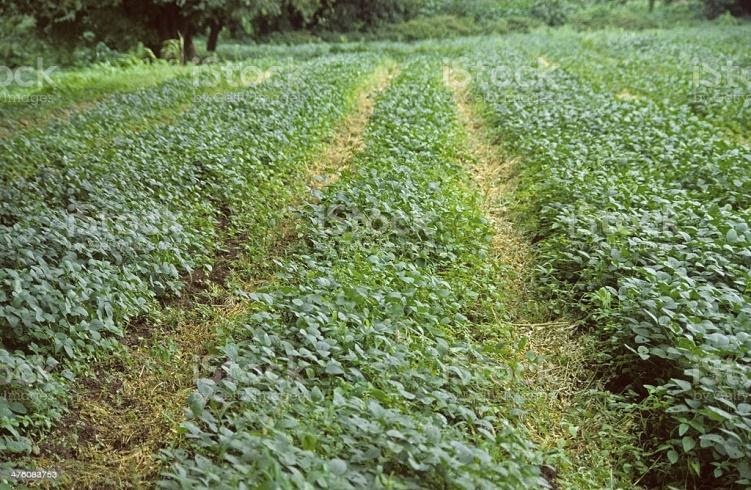Cowpea is one of the oldest legumes cultivated across India for green pods, green manure, fodder and dry seeds. The origin of this plant was in Africa. This plant is a drought hardy crop, and the growing of this plant is rapid; thus, the weeds suppress during the initial stage. It can also conserve the soil and moisture. Along with this, it is an excellent source of protein, iron and calcium. In Punjab, farmers grow it in irrigated conditions.
How to Do Cowpea Farming Business
You can easily do the Cowpea farming business in India. However, this farming can be more straightforward and profitable with the help of the following things. Just read the following tips and requirements for Cowpea farming.
Climate Requirement
To cultivate the Cowpea in a suitable manner, the temperature should be 22 to 35°C. At this temperature, the Cowpea plants show excellent growth. The temperature must be between 22 to 28°C during sowing so that the growth can be maximum. Apart from this, the rainfall must be 750 to 1100mm to show better germination. During the harvesting, the temperature should be 30 to 35°C.
Soil Requirement
We can cultivate the Cowpea in a variety of soils with good drainage. But if you want high production from it, you have to grow it in well-drained loamy soils.
Popular Varieties of Cowpea
Following are the popular varieties of Cowpea. Please have a look at them.
- Cowpea 88 – 100 QTL/acre – farmers grow this variety for both fodders as well as grain purposes.
- CL 367 – 108 QTL/acre – The seeds are tiny with light creamy white colour. It is helpful to beat the yellow mosaic virus and anthracnose.
- Kashi Kanchan – 60 to 70 QTL/acre – you can grow this variety in both conditions in the summer as well as the rainy seasons.
- Pusa SU Komal – The yield production rate is 40 QTL/acre.
- Kashi Unnati – 50 to 60 QTL/acre – Pods are light green and soft. You can harvest it in 40 – 45 days after sowing.
Land Preparation
Land preparation is one of the vital work in any type of farming. So, for it, you have to prepare seedbeds like the other pulse crops. Along with this, you should do two ploughing operations to bring the soil to its good tilth. After each ploughing, you should do planking for levelling the soil. These operations can be easy with the help of excellent tractors like the New Holland 3600 tractor and others. So rent or buy a good tractor for these operations.
Sowing
From March to Mid-July is the best time for sowing Cowpea for massive production. Sowing must be in space row to row at 30 cm and plant to plant at 15 cm. The sowing depth must be 3-4 cm in the soil. You can sow the seeds with the help of seed cum fertilizer drill equipment. You should use an excellent tractor like Massey Ferguson tractor 1035 and others to attach the seed cum fertilizer drill so that the operation can be easy.
Seed Rate
You should keep the Cowpea 88 seed rate of 20 to 25 Kg and CL 367 seed rate of 12 kg when you sow the seed for fodder purposes. Before sowing them, treat seeds with Carbendazim 50%WP@2gm per kg of seeds or Emisan [email protected]/kg of seeds. It can free the seeds from seedling mortality.
Weed Control
You can apply the Pendimethalin@750ml/acre to protect the crop from weeds. It can be used in 200 Ltr of water within 24 hours of sowing.
Irrigation
On average, four to five irrigation is suitable for tremendous growth. If you sow the seeds in May month, you should do the watering at intervals of every 15 days till the monsoon.
Plant Protection
Several pests and diseases can be the reason behind the low production rate or dead seeds. That’s why you have to protect the plants from pests and diseases. For Cowpea farming, some of the pests and diseases and their treatments are given below, which are:
Pest and their control:
- Jassid and Black Aphid – Spray Malathion 50EC@200ml/acre (in 80 to 100 ltr of water)
- Bihar hairy caterpillar – Take one row of sesame seeds at the time of sowing around the Cowpea field.
Disease and their control:
- Seed rot and seedling mortality – treat seed with Bavistin 50WP @ 2g/kg seed or Emisan 6 @2.5 g/kg seed before sowing
Harvesting
55 to 65 days after sowing, the crop will be ready for harvesting.
Conclusion
Now, you can quickly start your own Cowpea farming. Basically, it is grown for fodder and for grain. The production of this crop is also huge, which means it can give you a massive profit. So, just start the Cowpea farming business in India. We hope this blog can help you. For more information, stay with us.



